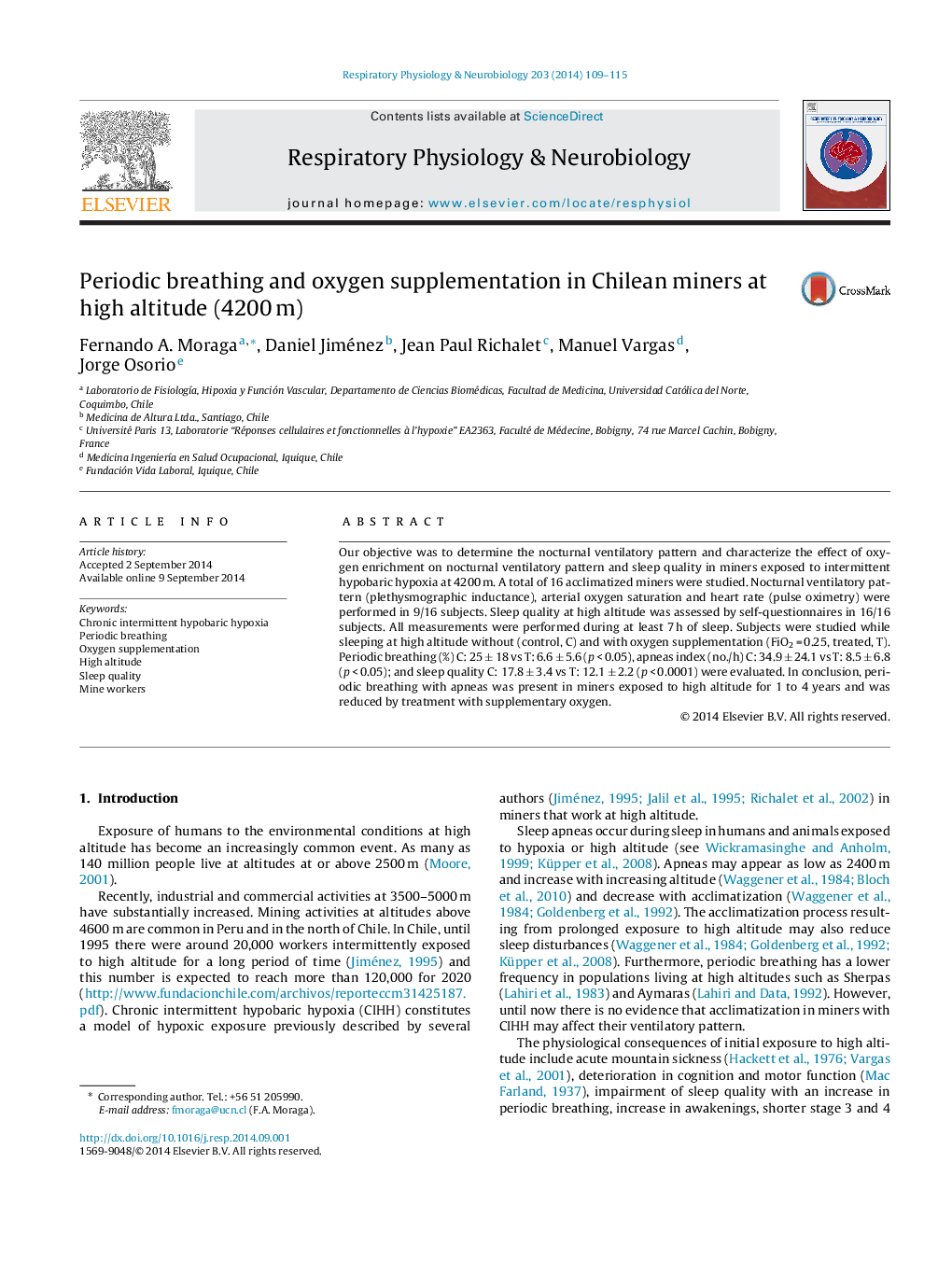| Article ID | Journal | Published Year | Pages | File Type |
|---|---|---|---|---|
| 5925940 | Respiratory Physiology & Neurobiology | 2014 | 7 Pages |
â¢We evidence the presence of periodic breathing with apnea in miners acclimatized to chronic and intermittent exposure to high altitude.â¢We support information about the time of acclimatization is over 4 years.â¢We corroborate the beneficial use of oxygen enhance quality of sleep, time spent in periodic breathing, oxygen saturation and reduce heart rate in all miners.
Our objective was to determine the nocturnal ventilatory pattern and characterize the effect of oxygen enrichment on nocturnal ventilatory pattern and sleep quality in miners exposed to intermittent hypobaric hypoxia at 4200 m. A total of 16 acclimatized miners were studied. Nocturnal ventilatory pattern (plethysmographic inductance), arterial oxygen saturation and heart rate (pulse oximetry) were performed in 9/16 subjects. Sleep quality at high altitude was assessed by self-questionnaires in 16/16 subjects. All measurements were performed during at least 7 h of sleep. Subjects were studied while sleeping at high altitude without (control, C) and with oxygen supplementation (FiO2 = 0.25, treated, T). Periodic breathing (%) C: 25 ± 18 vs T: 6.6 ± 5.6 (p < 0.05), apneas index (no./h) C: 34.9 ± 24.1 vs T: 8.5 ± 6.8 (p < 0.05); and sleep quality C: 17.8 ± 3.4 vs T: 12.1 ± 2.2 (p < 0.0001) were evaluated. In conclusion, periodic breathing with apneas was present in miners exposed to high altitude for 1 to 4 years and was reduced by treatment with supplementary oxygen.
